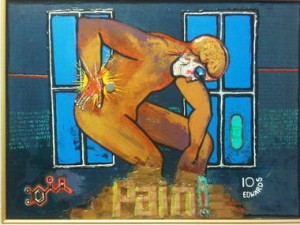Pain management is not a simple science. Rather, it is an art form. Pain management presents an intricate blend of diagnostic, treatment, and lifestyle challenges – all of which must be overcome to achieve the fastest and fullest possible recovery. Let’s briefly explore how each of the three categories can be best approached to optimize your chances of mitigating your pain and reclaiming a full and active daily life.
Using Multiple Disciplines to Diagnose & Treat Pain
The fact is that pain is not always as easy as we would like to diagnose and treat. Because that is the case, multidisciplinary diagnosis and treatment is not just an optional strategy for doctors and patients. Instead, it provides a necessary framework to accurately understand specific situations and craft meaningful management plans. Pain management doctors are at an advantage when they have various modalities immediately available to meet unique patient needs.
It’s crucial to take a multidisciplinary approach from the outset rather than using an outmoded “piecemeal” strategy, says Dennis Thompson, Jr., of Everyday Health. The science backs up this claim: recent medical studies offer loud and convincing evidence for the use of multidisciplinary means to treat pain, especially in the areas of chronic back pain and fibromyalgia (1).
Example Multidisciplinary Technique: Ultrasound
An example of a specific technique that is one piece of a multidisciplinary pain management plan is the use of ultrasound in a physical therapy program. An ultrasound machine directs sound waves at the effected part of the body. According to Laurie Sweet, a physical therapist for Johns Hopkins Hospital (2), this process creates heat in the patient’s body, which in turn stimulates blood flow and loosens tissues. The end result is twofold:
- easier to stretch and otherwise manipulate the body part
- reduction in swelling and inflammation.
How to Manage Pain with Lifestyle Changes
Always follow the recommendations of your pain management professionals, but there are several modifications to your day-to-day routine that can be pivotal in aiding your recovery. WebMD lists the following lifestyle changes to enhance your capacity for long term pain relief (3):
- Quit or reduce smoking
- Maintain a consistent, healthy sleep schedule
- Get regular aerobic exercise
- Stretch multiple times a day
- Use techniques such as breathing exercises or meditation to reduce stress
- Adapt your physical activity to avoid motions that trigger the pain
- Utilize assistive devices and technologies, such as voice-activation software.
As you can see, approaches toward pain management these days are broad and complex. Diagnosis, treatment, and lifestyle recommendations for proper pain management are best understood within a multidisciplinary approach. At the Atlanta Medical Clinic, we go beyond traditional medical care by offering not only neurological and physical therapy methods, but chiropractic care as well. If you think a multidisciplinary, integrative approach toward pain management might be right for you, please contact us today.
Sources :
(1) http://www.everydayhealth.com/pain-management/multidisciplinary-programs-for-pain-management.aspx
(2) http://abcnews.go.com/Health/TreatingPain/story?id=4047863
(3) http://www.webmd.com/pain-management/tc/chronic-pain-home-treatment
